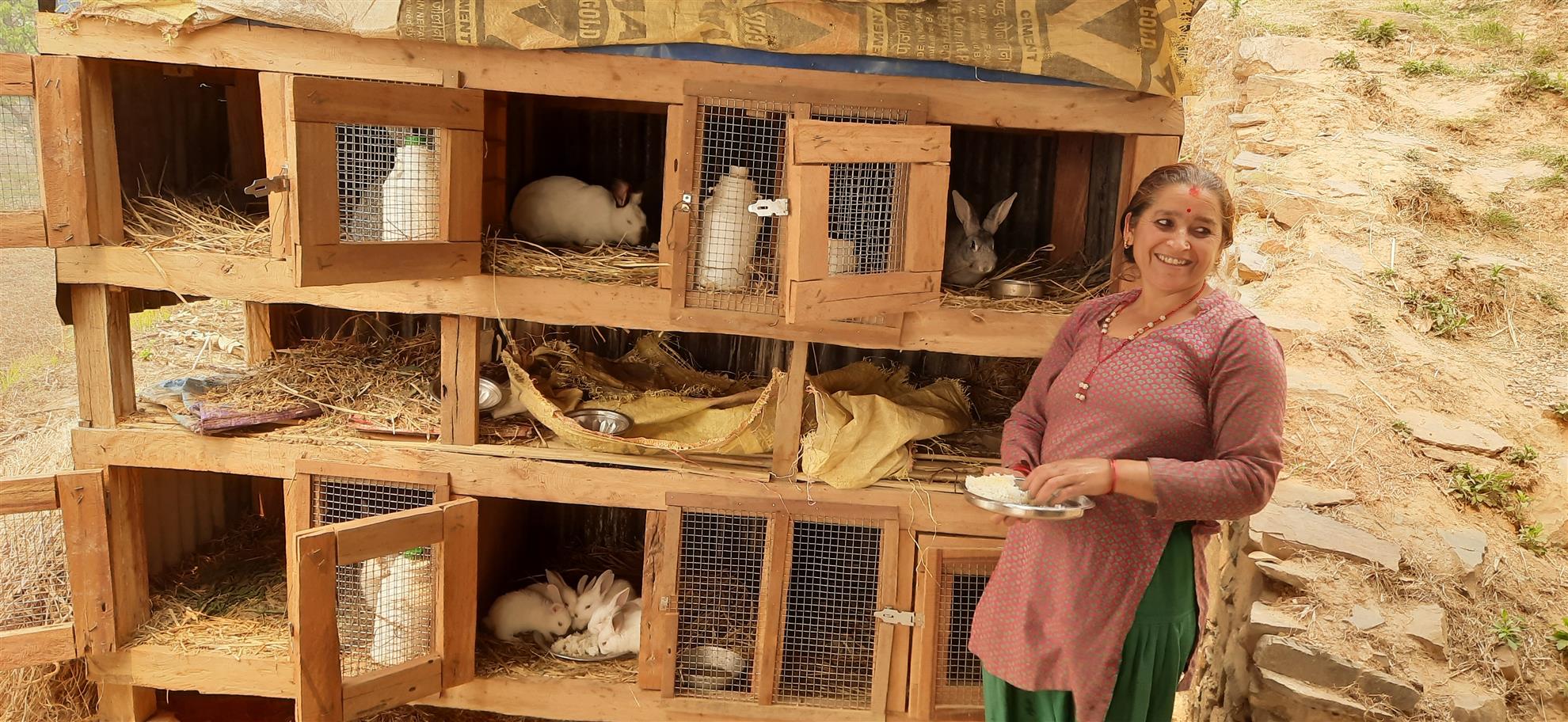
See the update from our international project in Nepal.
Kingsville Rotary Club partners with the Rotary Club of Tripureswar to support villages in the development of rabbit farms. This provides a sustainable food source and valuable commodity to communities still ravaged by the 2015 earthquake, now COVID-19.
Find out more about the Himalayan Rabbit Project here.
Pictures from the Field:




Letter from the Field:
I hope you are fine there and busy with your great works. I would like to update you some information about our work progress with some photos
- Distribution of forages saplings to 40 households from Jhakriban Village- Dhunibeshi Municipality and Kewalpur Village- Thakre Rural Municipality
- Buy-back of rabbits from both communities (35 and 55 numbers) respectively
- At least 10 families from Kewalpur are consuming rabbit meat at their households timely, among them 4 families are consuming rabbit meat regularly. We came to know that children in the area preferred the meat very much. We, together with the locally active farmers and cooperative representatives have planned to talk with the school management once it opens and talk about the modality/possibility to introduce rabbit meal in their canteen. We have realized that this could be a very effective means to promote rabbit farming as well as the meat consumption at the village.
- During the rabbit slaughtering demo done at the field, the locals practice of consuming rabbit with skin was more preferred and also did not have the barrier of rabbits looking like babies (people perceived skinned rabbits looked as babies). Some people regarded dressed rabbit as small goat fit for family- sought after meat. And whole rabbit with head consumption have been practiced, reducing the loss of meat after dressing.
- We are monitoring the rabbits timely and carrying out discussions with the communities to talk about their experience and problems. There were mortality of rabbits in both villages, during the rainy season- one possible cause identified upon discussion was- feeding of fresh forages/lack of proper wilting during the humid days.
- We are also exploring ways to lobby with the government body to introduce rabbit farming as a solution to address the nutritional needs of communities- to revive after COVID-19 crisis. If you could suggest other organizations as well, who might be interested to promote in such communities, that would be a great idea. This time onwards, we will also focus on introducing rabbit programs in communities, sensitizing the school children as well, to get expected outcome from the project.
I will share with you the progress report with the financials in a week or two once it is gathered from the field.
Looking forward to hearing from you.
Sincerely,
| Ujjwal Chapagain | |
| National Focal Point - World Rabbit Science Association Member- Asian Rabbit Producer's Association | |
| President- Rabbit Entrepreneur's Association Nepal | |
| MD-The Himalayan Rabbit Farm | |
| m: | 977-9851096182 |
| w: | www.himalayanrabbitfarm.com e: chujjwal@gmail.com |